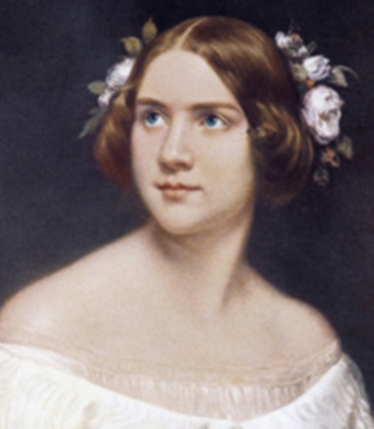1.1 Media and Culture

In 1850, an epidemic swept America—but instead of leaving victims sick with fever or flu, this epidemic involved a rabid craze for the music of Swedish soprano Jenny Lind. American showman and P. T. Barnum (who would later go on to found the circus now known as Ringling Bros. and Barnum & Bailey), a shrewd marketer and self-made millionaire, receives credit for spreading “Lindomania” through a series of astute show-business moves. Barnum promised Lind an unprecedented $1,000-a-night fee (roughly the equivalent of $41,292 in 2024) for her entire 93-performance tour of the United States. Ever the savvy self-promoter, Barnum turned his huge investment to his advantage by using it to create publicity.
His plan worked. When the Swedish soprano’s ship docked on U.S. shores, she was greeted by 40,000 ardent fans; another 20,000 swarmed her hotel (Barnum). Congress was adjourned specifically for Lind’s visit to Washington, DC, where the National Theatre had to be enlarged to accommodate her audiences. A town in California and an island in Canada were named in her honor. Barnum’s marketing expertise made Lind a household name and created an overwhelming demand for a singer previously unknown to American audiences.
The “Jenny rage” that the savvy Barnum was able to create was not a unique phenomenon, however; a little more than a century later, a new craze transformed some American teenagers into screaming, fainting “Beatlemaniacs.” Though other performers like Frank Sinatra and Elvis Presley could generate manic crowds, the Beatles attracted unprecedented attention when they first arrived in the United States. When the British foursome touched down at New York’s Kennedy Airport in 1964, they were met by more than 3,000 fans. Their performance on The Ed Sullivan Show was seen by 73 million people, or 40 percent of the U.S. population. The crime rate dropped that night to its lowest level in 50 years (Ehrenreich, et. al., 1992). Beatlemania was at such a fever pitch that Life magazine cautioned that “a Beatle who ventures out unguarded into the streets runs the very real peril of being dismembered or crushed to death by his fans.”

In the 21st century, rabid fans could turn their attention to a whole swath of pop stars in the making when the reality TV program American Idol hit the airwaves in 2002. The show was the only television program ever to have snagged the top spot in the Nielsen ratings for six seasons in a row, often averaging more than 30 million nightly viewers. Rival television network executives were alarmed, deeming the pop giant “the ultimate schoolyard bully,” “the Death Star,” or even “the most impactful show in the history of television,” according to former NBC Universal CEO Jeff Zucker (Carter, 2007). The emerging popularity of cell phone technologies allowed viewers to have a direct role in the program’s star-making enterprise through casting votes, signing up for text alerts, or playing trivia games on their phones. In 2009, AT&T estimated that Idol-related text traffic amounted to 178 million messages (Poniewozik, 2009), though the program’s influence has dwindled over the years.
Sometimes the systems of mass communication create crazes that impact culture for all the wrong reasons. The Fyre Festival, scheduled for May 5-7, 2017, in the Bahamas, was heavily promoted on Instagram by influencers like Kendall Jenner, Emily Ratajkowski, Hailey Bieber (formerly Baldwin), Bella Hadid, and Elsa Hosk, among others. The festival’s marketing promised luxurious accommodations and a high-status experience for everyday people. Thousands bought into the hype, but when the first wave of attendees arrived, they discovered that the advertised amenities and accommodations were far from reality. Instead of the promised luxury, they faced inadequate shelter and poor conditions (Fyre, 2019).
The situation worsened due to logistical challenges, including the annual Exuma Regatta, a popular sailing competition that made it difficult for travelers to find alternative accommodations or leave the island. The festival was ultimately canceled, and its organizers, Billy McFarland and rapper Ja Rule, faced severe backlash. McFarland served four years in prison for wire fraud related to defrauding investors and a ticket vendor, and was ordered to forfeit $26 million (Lewis, 2018).
Additionally, many of the celebrities who promoted the event initially failed to disclose that they were paid for their endorsements. This oversight led to increased scrutiny and prompted the Federal Trade Commission (FTC) to revise its guidelines and Endorsement Guides to strengthen enforcement against such violations.
The various forms of mass media help create excitement in society. Whether through newspaper advertisements, live television broadcasts, or integrated Internet marketing, media industry tastemakers help shape what people care about. For as long as mass media has existed in the United States, it’s helped to create and fuel mass crazes and pop culture manias of all kinds. Even in an era of seemingly limitless entertainment options, mass media outlets produce hits (and, in the case of the Fyre Festival, misses) that dominate the public’s attention. This textbook explores different kinds of mass media and how they have been changed by—and are changing—the modern world.

